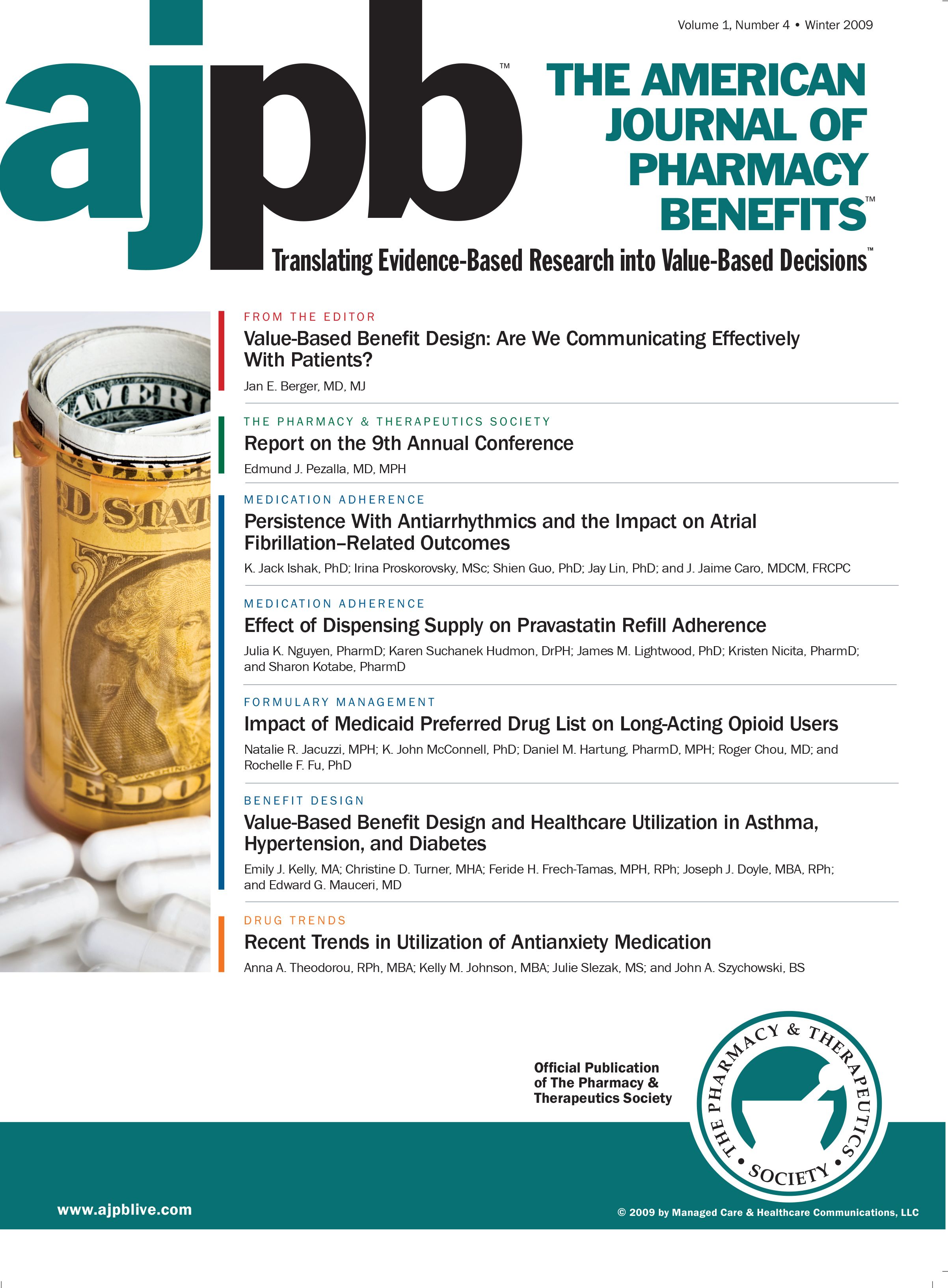Publication
Article
AJPB® Translating Evidence-Based Research Into Value-Based Decisions®
Value-Based Benefit Design: Are We Communicating Effectively With Patients?
Author(s):
Effective, targeted communication is essential to the success of a value-based benefit design.
We are hearing a great deal about value-based insurance and benefit designs. Value-based insurance is in the popular press, it is the subject of a number of conferences, books have been written about it, and it has even been discussed during the health reform conversations on Capitol Hill. This journal, as well as many others, has published articles that have shown the success that many companies have enjoyed utilizing this model. Some models decrease the costs of certain medications, others address health prevention activities, and others reward appropriate use of high-value physicians or healthcare facilities.
Most of the studies on value-based design published in this journal concern medications and the pharmacy benefit. Early adopters such as Pitney Bowes, Procter & Gamble, and the city of Ashville have led the way for hundreds of other companies to adopt various forms of this health benefit. That being said, other companies have not realized the same types of success.
Factors that promote success (ie, clinical and/or financial improvement) include appropriate use of data, focused designs, and a complete communication plan. I would like to spend a few minutes focusing on the issue of communication. The purpose of value-based benefit design is to reward high-value health activities with incentives to take appropriate action. Numerous studies have shown that in order for action and incentives to be successfully tied to health, healthcare consumers need to know about the benefit design, understand what they are being asked to do, and understand how it will affect their personal health.
Many of those reading this article may believe that this is obvious. It may be. Unfortunately, it is common for 1 or more of these areas not to be addressed. A March/April 2004 health poll report survey done by the Kaiser Family Foundation found that more than one-third of those asked did not understand their healthcare benefit. A 2008 study showed that only 50% of healthcare consumers had knowledge of copayment amounts. Without patients understanding their basic health insurance and the associated costs, it is unlikely that they will act in a costresponsible manner.
In addition to providing basic knowledge about health benefits and benefit design, the communication has to move a patient to action. However, a number of studies have shown that general health and cost information often does not cause a patient to act. Use of personalized information that addresses the individual concerns or issues significantly improves the likelihood of action and behavior change. Therefore, the more an employer or health plan can personalize a message to healthcare consumers, the more likely they are to pay attention to the message and act on it.
To be effective, communication not only must have content that moves consumers to act, but also must be accessible. Healthcare consumers believe that important information will be given to them a number of times, so that if they miss it once, it will be available to them again. Accessibility of information not only includes the number of times information is given, but also the ways in which the information is available. We know that some people access information best through the written word, whereas others understand and retain information best through auditory means. To maximize the availability and utilization of the information, it is important that employers and health plans use all available means of communication.
We are at a crossroads in the healthcare debate where we are looking to increase access to appropriate care in a cost-effective manner. Use of value-based insurance and benefit design is one way to address the issues of both access and cost. We just have to remember that putting these systems in place without the proper supporting activities is likely to result in less than maximal outcomes. Without effective, targeted communication, an employer or health plan is at risk for a value-based benefit being underutilized and therefore not successful.







